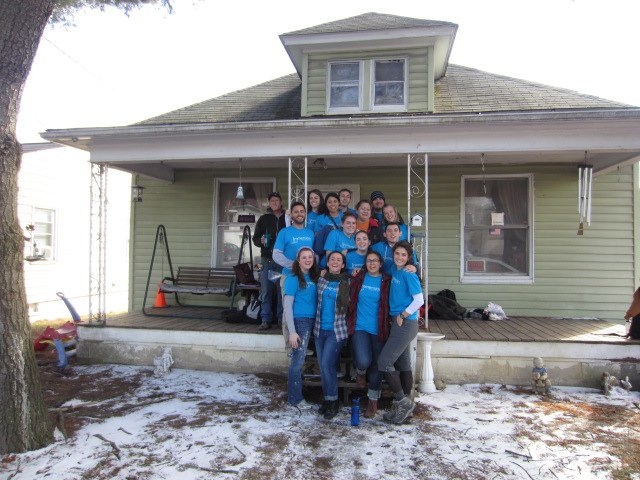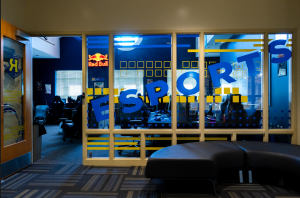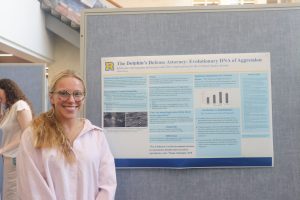I didn’t know what I was signing up for when I decided to send in my Immersion Application for Spring break. I had never gone on an Immersion, and I was unfamiliar with the experience. I had heard about the trips but it never peaked my interest as a recluse and hermit. However, my parents’ abandonment over the March holiday offered me either a week in an empty dorm hall (creepy) or to go to West Virginia with 13 strangers.
So, I chose West Virginia. As various group meetings passed, we came upon our departure date: March 3. At 7:00 a.m. our luggage and 13 of us hobbled sleepily onto the JUMP Bus that would carry us 13 hours to Pipestem, West Virginia. For a Floridian (even with thicker blood than most) I did not anticipate the freezing cold of 19 degrees, but the snow was a welcomed friend (and eventually an enemy against our bus.)
We arrived at the Appalachian Folk Life Center, introduced to its cheerful coordinator, Ms. Shelly, and then settled into our dormitories for the night, preparing ourselves for the first day of work on Monday. That morning we staggered out of bed and after packing lunches, we climbed onto our bus which would take us the 25 minutes to Princeton where our work was stationed.
Our job wasn’t to judge Ms. Ann’s living conditions, but notice them and try to make them better.
We arrived at an aloe-green house with toys littered all across its front porch. There we met Greg, our site leader, and knocked on the white screen door to meet Ms. Ann, an older blue-eyed woman with striking auburn hair who had lived in this house for 20 years. From the outside, there appeared to be nothing askew with the home despite a few dingy shingles, but the inside, apart from Ms. Ann’s warm welcome, was disparaging.
Our job wasn’t to judge Ms. Ann’s living conditions, but notice them and try to make them better, one of the many valuable lessons I learned on the trip. So, Monday, we divided into teams or 4 units: the first unit took the kitchen, the second took the dining room, the third (myself included) took the living room, and the fourth team, bless their hearts, were assigned scraping paint off the walls; this job took them the whole entirety of our work time from Monday to Friday.
We would start everyday around 9:30 a.m. knowing what we had to do: clean the walls, vacuum the floors, scrape paint, scrape grime, scrape tar of the walls, paint the walls with two coats, and attempt to fix anything that may have been broken. I must be forgetting other duties, but its possible a week has fuzzied my memory.
We finished with barely enough time on Friday, hanging up the new curtains we bought for Ms. Ann on her windows and empty doorframes to keep the heat in her house from leaving the living room. With tears in her eyes, she looked around and said, “Ya’ll got me new curtains. I haven’t had new curtains in 20 years.” With that, she hugged us goodbye, and our mission was complete. We gave Ms. Ann hope, which, immaterial compared to what we physically gave her, was our purpose when we first set out to West Virginia.
It wasn’t all work and no play: snowball fights, cook-offs, pauper, capture the flag, movies, culture sessions and even zip-lining, our trip was filled with so much fun that the philanthropy itself was considered a highlight.
Before this trip, I had never done anything volunteer based. I had figured it wasn’t in my nature. However, the Immersion trips are more than worthwhile to participate in. You make beautiful friendships, strange relationships, meet new and unexpected people, and give something back to those who rarely take. I encourage that other students take advantage of these volunteer opportunities, whether through Immersion or JUMP because you never know, you might just surprise yourself.










Be First to Comment